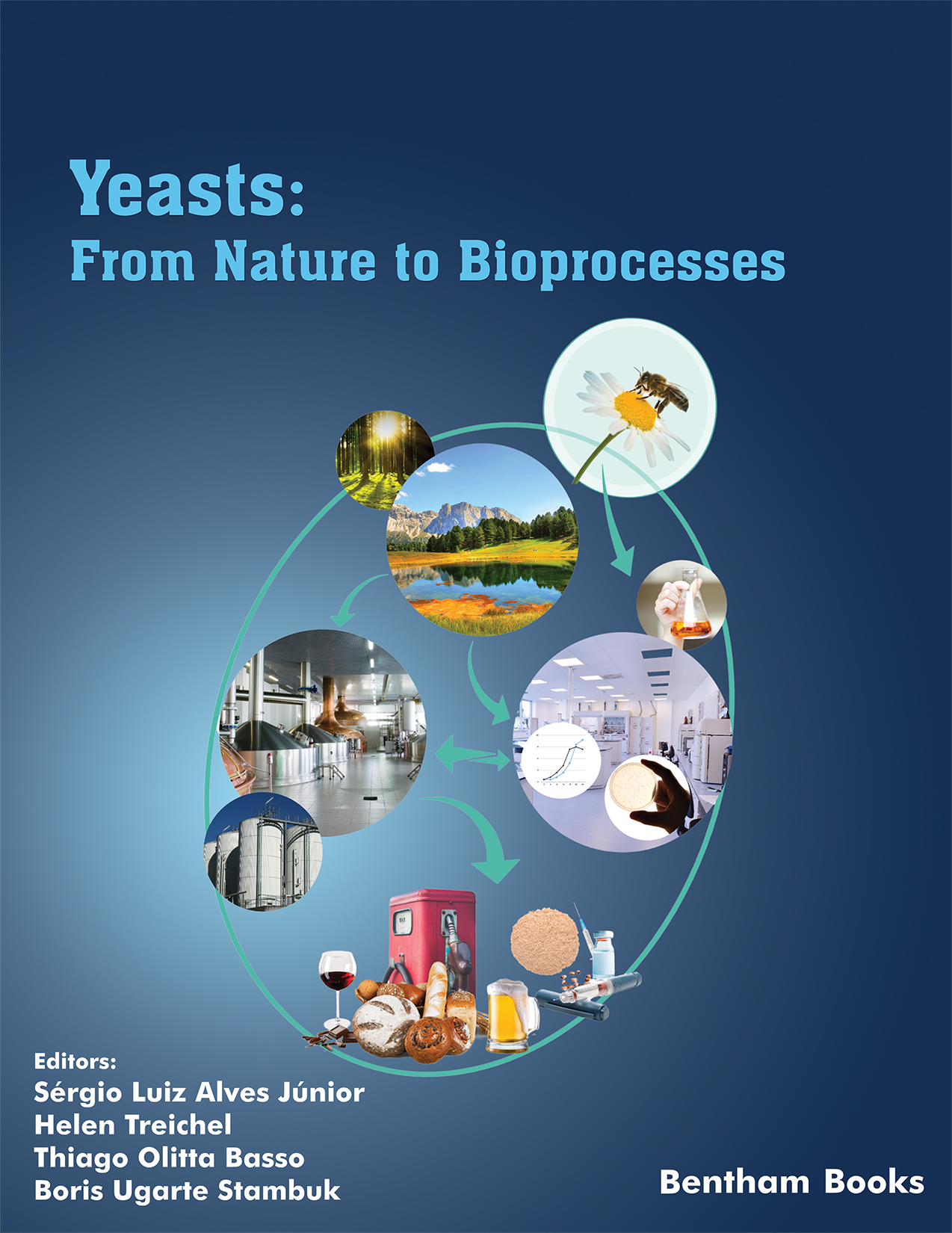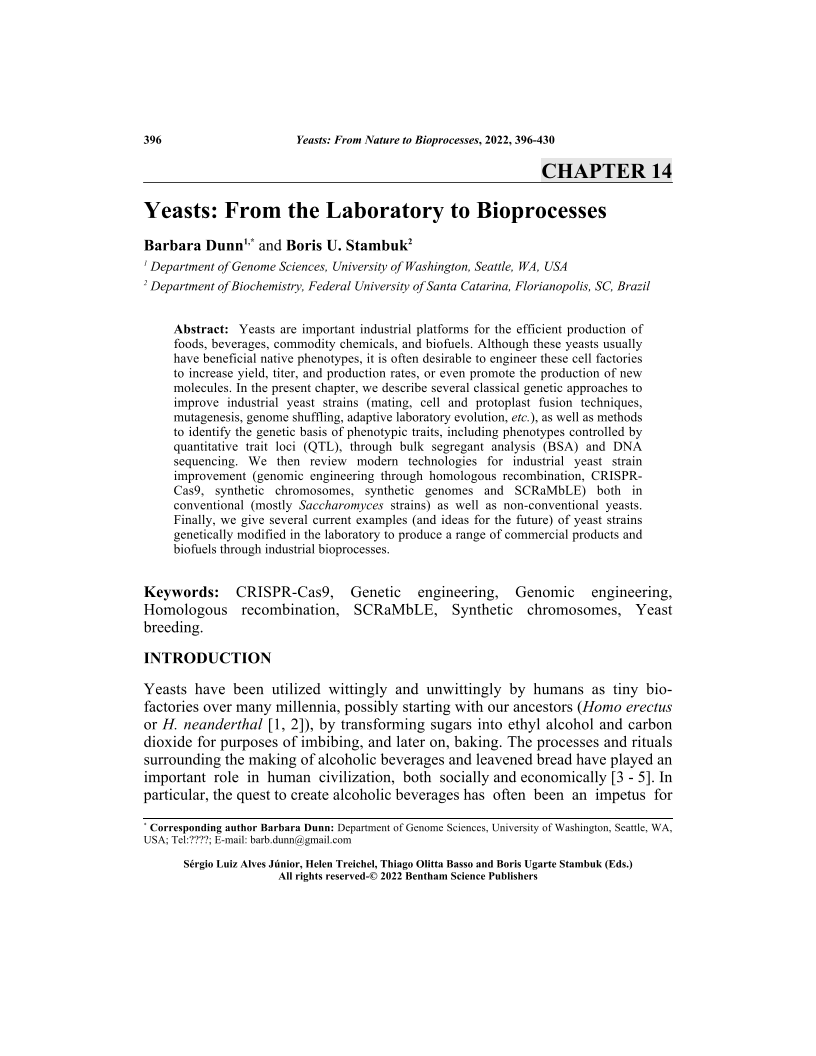Yeasts: From the Laboratory to Bioprocesses

- Authors: Barbara Dunn1, Boris U. Stambuk2
-
View Affiliations Hide Affiliations1 Department of Genome Sciences, University of Washington, Seattle, WA, USA 2 Department of Biochemistry, Federal University of Santa Catarina, Florianopolis, SC, Brazil
- Source: Yeasts: From Nature to Bioprocesses , pp 396-430
- Publication Date: March 2022
- Language: English
Yeasts: From the Laboratory to Bioprocesses, Page 1 of 1
< Previous page | Next page > /docserver/preview/fulltext/9789815051063/chap14-1.gif
Yeasts are important industrial platforms for the efficient production of foods, beverages, commodity chemicals, and biofuels. Although these yeasts usually have beneficial native phenotypes, it is often desirable to engineer these cell factories to increase yield, titer, and production rates, or even promote the production of new molecules. In the present chapter, we describe several classical genetic approaches to improve industrial yeast strains (mating, cell and protoplast fusion techniques, mutagenesis, genome shuffling, adaptive laboratory evolution, etc.), as well as methods to identify the genetic basis of phenotypic traits, including phenotypes controlled by quantitative trait loci (QTL), through bulk segregant analysis (BSA) and DNA sequencing. We then review modern technologies for industrial yeast strain improvement (genomic engineering through homologous recombination, CRISPRCas9, synthetic chromosomes, synthetic genomes and SCRaMbLE) both in conventional (mostly Saccharomyces strains) as well as non-conventional yeasts. Finally, we give several current examples (and ideas for the future) of yeast strains genetically modified in the laboratory to produce a range of commercial products and biofuels through industrial bioprocesses.
-
From This Site
/content/books/9789815051063.chap14dcterms_subject,pub_keyword-contentType:Journal -contentType:Figure -contentType:Table -contentType:SupplementaryData105

